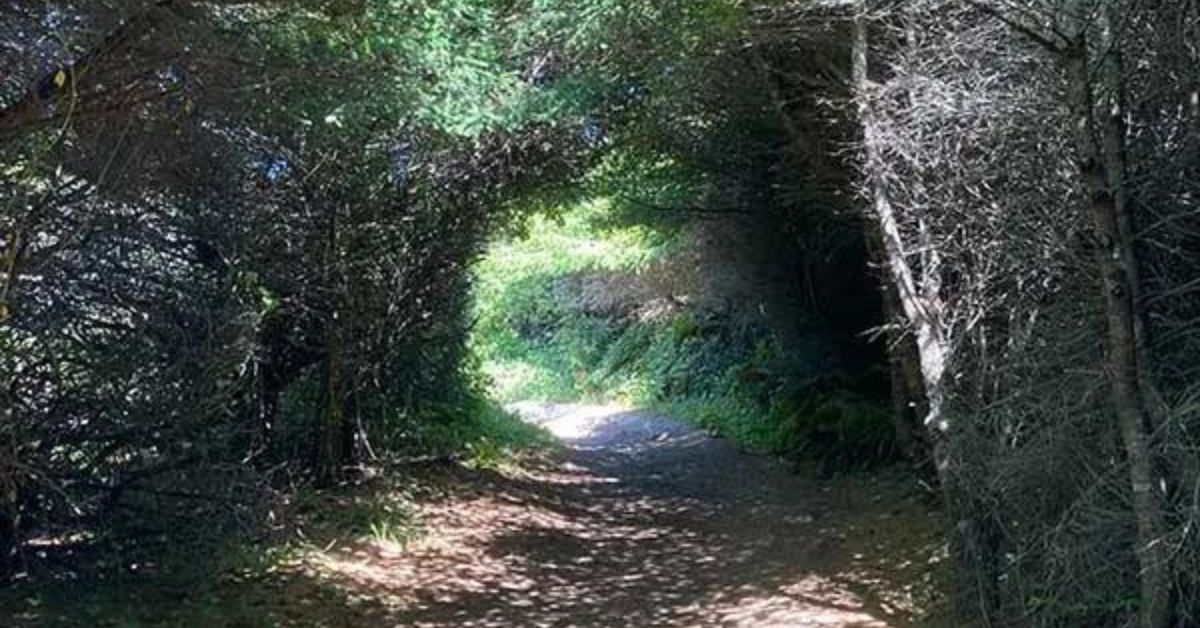We were barely twenty minutes into the session when my 1:00 p.m. patient started to sing. The patient, whom I’ll call Frank, was a gentle and likeable man in his mid-fifties, and he’d come to my mental health clinic in Fort Collins, Colorado seeking treatment for ongoing struggles with depression, periodic alcohol abuse, and issues with his sexual identity. Like many patients, he’d been in some form of therapy on and off for decades, but seen relatively little traction in his treatment in that time: he still felt hopeless and alone and the side-effects of antidepressants too burdensome.
So, on this visit I had proposed something remarkably different: ketamine-assisted psychotherapy. Ketamine is a powerful drug known historically for its uses in anesthesia, but now used in what’s considered the psychedelic renaissance in mental health. In contrast to traditional psychopharmacological medicines, like SSRIs and benzodiazepines, which tend to act by suppressing symptoms to make life more tolerable, psychedelic medicines like ketamine, psilocybin and MDMA seek to address underlying distress acutely by opening the further reaches of the psyche to exploration. Not unlike psychotherapy at its most potent, what these medicines offer frustrated patients like Frank is a potential re-encounter with the true self – a chance to reframe a personal narrative and rethink big questions about identity or even digest old traumas.
To begin the treatment, I administered the medicine via an intramuscular injection in his arm. Typically, patients will receive three to eight injections spaced over a few weeks or months. After the injection, patients then usually don eyeshades and headphones to help encourage the drug’s dissociative state, emerging periodically to process with me and talk about what they’re experiencing. The psychotherapeutic aspect is critical, since the medication alone can be disorienting or deliver insights that are difficult to grasp. After a few minutes, as the drug effect deepened, Frank began to review his troubles internally, experiencing what he described as a deep sense of self-compassion and forgiveness – one he’d previously known only as an external and frail mandate. He cried. Forgave himself. And this appeared to bring Frank, usually quite restrained and circumspect, a profound sense of joy – the first, he said, that he’d felt in many years.
And so, he began to sing. At first, it was little louder than a whisper. But soon the song rose to operatic heights – sung in a language neither of us recognized. The song, Frank later told me, was driven not by words or meaning, but instead pure, ecstatic emotion; he felt himself recapturing in song the joy he’d left behind in his life. Unlike prior therapy sessions or life on antidepressants, this was not weak external encouragement or the mere suppression of symptoms, but a palpable experience – quite real and pivotal. By the end of his session, the song had drawn the attention of nearly everyone in our clinic. Both patients and staff were captivated by the 40-minute opera emanating from a psychiatrist’s office.
The successes of psychedelic experiences like Frank’s are by now well documented. Over the last five years or so, an explosion of brain science and supportive clinical research has been published, documenting psychedelics’ profound differences from our current psychiatric tools. Psychedelic medicines and ketamine may work by decreasing activity in the default mode network of the brain, one of the principal systems that drives self-reflection and our sense of self. Research by Robin Carhart-Harris, a leading researcher from Imperial College in London, shows that psychedelic medicines disrupt rigid patterns in this neural network and allow for more flexibility in thinking and behavior. Though still somewhat theoretical, this research seems to support what I often hear from patients – that they feel “stuck” and are searching for a way to hit “reset.” Psychedelics seem to offer just that. In one landmark trial conducted at Johns Hopkins, 83% of people rated a single therapeutic psychedelic session with psilocybin (the active ingredient in mushrooms) as among the most powerful experiences in their life – one that changed their thinking, and one they continued to draw on for strength and stability a year later. As Michael Pollan says in his best-selling book, How to Change Your Mind, “one good way to understand a complex system [like the brain] is to disturb it and then see what happens.”
But if psychedelic experiences like Frank’s offer a novel way to change a patient’s mind, they also represent a paradigm shift for mental health care and the practitioners like me who practice it. Like most psychiatrists, I have now spent the better part of my four-decade career prescribing psychiatric medications, many of which just don’t seem to work, at least for very long. As a young psychiatrist in the 1980s, the much-anticipated launch of Prozac reflected the promise of a grand new era treating mental illness by correcting brain chemistry. But the promise of that era never quite materialized. Today, most people with a chronic mental illness slip into a resigned monthly shuffle to and from the psychiatrist’s office for medication adjustment and management. For practitioners, it’s a dulling and dispiriting cycle; few get better and even fewer fully recover. Somewhere between a third and half of all patients with chronic depression become “treatment resistant” and stop responding to medications altogether. Despite increased effort, research and treatment, our profession’s worst outcome – suicide – continues to rise. Depression has now become the number one disabling condition around the world. Today, psychiatry remains the only medical specialty that has not gained ground on its major illnesses in the last thirty years. Like many of our patients, large numbers in my profession feel stuck with the limitations of current care options.
My phone lights up once or twice a week from a psychiatrist or psychotherapist familiar with my work with psychedelics and eager to get involved in this type of care. They want to know about training options, career path or even open positions. What comes across loud and clear is that they feel empty about their current work and exude a determination to work with psychedelics. After we explore options and the latest innovations, the discussion inevitably comes around to their high level of motivation and inspiration for this change in practice. “LSD saved me from depression in medical school.” “Psilocybin helped me to move past my alcohol abuse.” “MDMA saved my marriage.” “Ayahuasca opened my spiritual awareness and gave me new found purpose in life.” Two things about this odd pattern strike me. First, these professionals feel open and secure enough to share this private and very personal material with me very soon after we first connect. Second, the consistent theme of personal change that drives a deep alliance to this work. A very common characteristic of clinicians, donors and researchers in the psychedelic arena is this beneficial personal experience with these medicines that they credit with some important internal growth that blurs the line between mental health and spiritual evolution. It is not dependent on these medicines. Many no longer dabble with them at all. Rather, it is both a sense of gratitude and a determination to share the benefit they received. For most of the professionals that I encounter in this arena, psychedelics have moved beyond a professional interest to a personal crusade inspired by the gift they have been given. Their life changed for the better in a deep and sustained way. I knew that story.
I noticed the rocks first. The intricate grain of the boulder that I was sitting on began to swirl with a kaleidoscopic geometry. That was my first indication that the medicine had begun to take effect. Pounded by the surf, these massive kelp covered rocks were located deep inside an isolated cove on the coast of California. Forty minutes earlier I had taken a dose of a novel psychedelic compound called 2-CB. My third year of medical school had devastated me with deep disappointment with the imbalances between fixing and healing, caring and managing that I encountered. In spite of losing twenty pounds from an already thin frame, my meals often consisted of drinking red wine on my back porch on the edge of Tucson staring into the desert searching for solace. I had entered medical school at the University of Arizona passionate about exploring novel approaches to health and the power of the mind to heal. Nearing graduation, I was now doubting my career choice and feeling hopeless. I had begun to think about quitting medicine and trying a new career teaching neurobiology and had just applied for a faculty position at Colgate University teaching college students. Part of me knew that I needed guidance on my personal journey. Andrew Weil, MD, part of the early Harvard psychedelics scene, was now teaching at our medical school, and he had become a mentor as well as a powerful inspiration. Psychedelics had become a core interest and fit well with my core interest in consciousness. Hence, my awareness of agents like 2-CB and the power of these tools to transform. I needed help.
As I sat on those moving rocks, my individual awareness gradually slipped away. I felt unified with this beautiful stone, the endless sea, the brilliant sun and the soft cliffs around me. I understood the scope of evolution, the scale of time and my tiny role in the symphony of experience. There were no boundaries. There was no self. I was part of something so much greater; this peeled away my fear, sadness and my personal troubles. Understanding was not linear or logical, but simply a knowing that went beyond words or concepts. Depression seemed trivial, useless and frankly inappropriate. Insights overwhelmed me in rapid succession. I felt again drawn to the path of healer and this experience certainly transformed a curiosity about the power of psychedelics into a passion. My greatest challenge was now finding my way back to my fiancée’s family home and facing my future in-laws while still quite altered a few hours later. Manageable and practical concerns.
Following this healing, I was able to re-engage with medicine. I graduated one year later and then completed an internship at a Columbia hospital in New York, but felt inspired to leave formal training to follow my passions. I practiced as a general practitioner in rural Arizona also delivering babies for a county hospital and working part-time in a holistic clinic. Work with MDMA called to me. I witnessed the power of this novel tool to heal people in a way that conventional psychiatric medicines never did. The DEA scheduled MDMA in 1985 and made it illegal and this was a difficult blow for me. It reinforced my need to return to my psychiatric training. I was also pulled to explore acupuncture, Jungian therapy and mind-body techniques to heal mental health issues. A busy practice, a growing family and my work teaching other psychiatrists about this alternate path of healing kept me very busy. Psychedelics research went pretty quiet for a few decades. I moved on.
Thirty years after that time on the coast I came to another crossroad. I had a successful large practice at an innovative clinic that I founded. I had written a few textbooks and taught widely, but I felt sort of empty. The conventional model of psychopharmacology had never been a great fit for me as a psychiatrist. I prescribed the medicines of our specialty with great ambivalence. Those many years ago, I had studied to be a Jungian therapist in the belief that, together, a psychiatrist and patient could plumb the deepest reaches of the patient’s psyche, decoding the memories, dreams and reflections that flowed from the unconscious. I believed in the work, and I believed in its possibilities to heal. The progressive push of psychopharmacology altered all that and made my Jungian training feel useless, like baggage from a foreign past. When we are tasked with repairing “chemical imbalances,” psychiatrists are forced to step further away from the therapeutic partnership the specialty originated in and closer toward one of the detached, expert pill pusher attempting to outsmart the human brain. The responsibilities of the job wore on me, and after many years, I was ready to quit.
An old friend called to me. On a sunny and crisp spring day sitting in a Colorado mountain meadow, I left my usual self to explore the further reaches of my psyche. One message rang clear: follow the path of spirit towards deeper healing. I felt called back to psychedelics. Within a few years I was practicing with ketamine-assisted psychotherapy and researching MDMA as part of the current Phase III study with the Multidisciplinary Association for Psychedelics Studies. I now have tools to address imbalances of body, mind and spirit. More than that, I feel a deep passion to share this work with other professionals. Those callers are doing me a favor.
Today, when I sit down with a patient, not only does that Jungian training feel useful, but I also feel useful again as a healer, which is what brought me to the profession in the first place. In the end, what working with psychedelics has given me, more than anything else, is the chance not only to return to that belief system, but to believe once again in the possibilities of recovery. Each day now I look forward, just as I once did, to how the healing mind might reveal itself – through song, tears, or otherwise. It’s always been a sacred mystery; we should honor it as such.
Ketamine as a Catalyst for Paradigm Change in Mental Health
Ketamine as a Catalyst for Paradigm Change in Mental HealthScott Shannon, MD FAACAPPsychedelic Research and Training...





